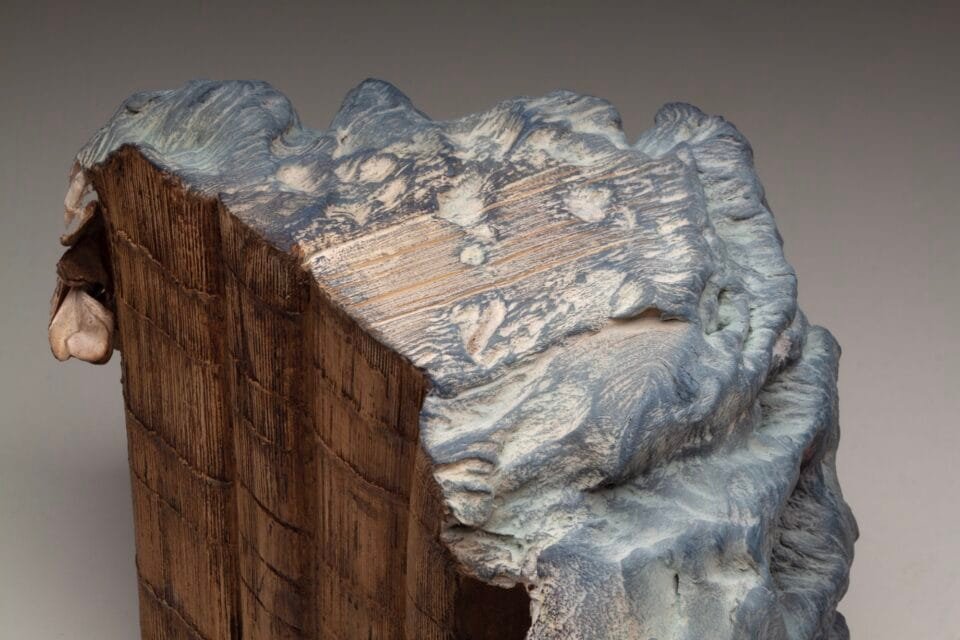I was on a gallery crawl downtown when news broke that New York’s Museum of Modern Art had chosen Christophe Cherix as its next director, arguably the most coveted position in the upper echelons of the international art world. That afternoon, I happened to stop by a show at Hannah Traore Gallery dedicated to the Guerrilla Girls.
The feminist artist group cut its teeth in the mid-’80s with a series of posters that took the art world to task by tallying data about gallery rosters, museum hangs, and more. The results were always disappointing: they showed that the art world remained overly male and overly white, with the numbers to prove it.
Interestingly, though, I couldn’t find a tally of the diversity of directors of New York museums in their archive. Here’s one as it currently stands for 2025. Today, three of the city’s four largest institutions—MoMA, the Metropolitan Museum of Art, and the Whitney Museum—are all led by white men, while the Guggenheim Museum is led by a white woman. Expanding the purview to include institutions like the Frick, the American Folk Art Museum, and the Morgan Library (white men), as well as the New Museum, MoMA PS1, the Brooklyn Museum, the Queens Museum, and the Dia Art Foundation (white women), the results aren’t much different.
There are more women running museums in New York than there were 40 years ago, but when it comes to diversity at the top, the picture is still pretty bleak. (The landscape is relatively similar at the top art museums in each of the US’s next largest cities.) Among the only people of color leading art museums in the city are Thelma Golden at the Studio Museum in Harlem and Patrick Charpenel at El Museo del Barrio, both of which are culturally specific museums. (Golden was long rumored to be the obvious choice for the MoMA directorship when it opened up.)
The leadership of an organization signals its virtues—who’s at the top says a lot about its mission and vision. So, it’s a shame that a museum like MoMA wouldn’t take a more venturesome leap forward with the appointment of its next director.
With MoMA, any decision of this kind takes on more significance. It is one of two museums—the other being the Met—that has an unofficial leadership role in this country. In other words, when MoMA moves, others follow, from the encyclopedic and encyclopedic-adjacent collections in cities like Los Angeles, Chicago, Boston, Philadelphia, and Houston to the ones focused on modern and contemporary art. MoMA’s move in many ways arguably puts more pressure on institutions doing leadership searches in the coming years.
Plus, MoMA also holds a singular position within the history of modern art, with its first director, Alfred H. Barr, Jr., having famously mapped out an exceedingly linear—and exclusionary—progression of artistic movements beginning in the late 19th century until the mid-20th century.
Cherix is certainly qualified for MoMA’s directorship. Having joined the museum nearly 20 years ago and having served as a chief curator of prints and drawings for around 15 years, he knows MoMA intimately. He’s co-organized ambitious exhibitions for important artists, including Marcel Broodthaers, Adrian Piper, Bruce Nauman, and Ed Ruscha, and in an interview with the New York Times, outgoing director Glenn Lowry highlighted Cherix’s had successful fundraising for these shows, many of which were unusually large in scale. That’s not easy work, especially when you think about just how much money—including fees for shipping, insurance, and installation—shows of this kind require.
That Cherix has these skills is a big plus, especially for a mammoth institution like MoMA, which has an endowment of around $1.7 billion and an operating budget of around $270 million. And then there’s the board of trustees. At 55 members, it’s one of the largest and most powerful boards in the country. Lowry successfully managed to maneuver the intricacies of this class of elite, mostly billionaire, moguls and philanthropists (some of whom have been protested in recent years). Lowry told the Times last year that he could have stayed for another five-year contract—he had the board votes to gain the necessary approval. But he bowed out, hoping to pass on the reins to a younger generation.
The board found that in Cherix, who is 55 years old. Per MoMA’s previous policy, senior managers retired at 65, giving Cherix ten years in the job. But Lowry stayed on until 70, and when his most recent contract was renewed, a MoMA spokesperson seemed to imply that the policy was no longer really in effect in a statement to the Times.
When Lowry announced his retirement last September, a running game of speculation over who might succeed him began. (ARTnews, too, compiled a list of candidates who might be on the shortlisted for the position.) It’s known that the museum conducted interviews with external candidates, but they ultimately decided to go with someone in-house. An internal hire who has never been a director is in some ways a surprise, but perhaps not so for those familiar with MoMA’s board, who seemingly value stability and safety over someone who might bring a fresh jolt of energy.
Since its founding in 1929, MoMA has only had six directors, with Cherix set to become the seventh. All of them have been white men. As a way of saying that these men are not the only ones who have played important roles in the museum’s history, MoMA last fall published a book titled Inventing the Modern: Untold Stories of the Women Who Shaped The Museum of Modern Art, looking at 14 (white) women who left an indelible impression on MoMA, including the three founders—Abby Aldrich Rockefeller, Lillie P. Bliss, and Mary Quinn Sullivan. Without these women, MoMA wouldn’t exist. The publication of that book hinted, at least to me, that perhaps the board would at least choose a woman for the directorship.
That didn’t happen, and when the news broke of Cherix’s accession, the ARTnews Slack channel lit up with discussion about just this. One colleague made an astute observation. While MoMA conducted a search for its directorship, the Whitney seemingly did not for its leader. The Whitney announced that chief curator Scott Rothkopf would take over in the same release that confirmed Adam Weinberg would step down in a few months’ time. As my colleague wrote, “At the end of the day they both hired white men from within.”
Having not served on the board’s search committee for the MoMA directorship, there’s no way to say definitively if the museum was always going to go with the internal candidate. But it does make you wonder. I’m not saying that people shouldn’t be able to grow in their jobs and be considered as strong candidates for leadership institutions at places they’ve spent a large amount of their careers. I have myself benefitted from rising through the ranks, having started as an editorial intern at ARTnews over a decade ago.
But there is still something that doesn’t quite sit right about Cherix’s appointment. Of course, I’m more than happy to be proven wrong. As Lowry said of Cherix, “he also has his own ideas.” I’m intrigued to hear those ideas, but this isn’t what I—and probably a significant contingent of the art world—hoped for. In many ways, it’s just another deflation, a moment where nothing has changed, where progress achieved has reached yet another standstill. The barriers at the top clearly still exist, just as they do at all levels. They don’t seem to be going anywhere, anytime soon.
The United States is in a dark moment. Museums, to my mind at least, are places to inspire, to provide hope, to show a different way forward. I thought the appointment of new director for MoMA would likely do just that for me. Unfortunately, it didn’t.
















Leave a Reply